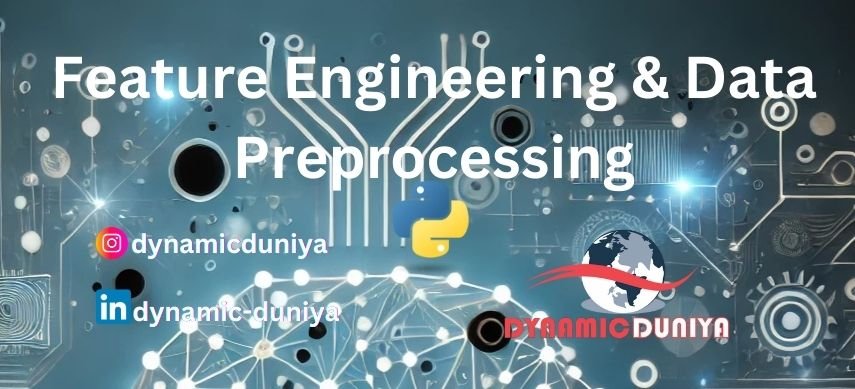- Unsupervised Learning
-
Overview
- Introduction to Unsupervised Learning
- K-Means Clustering Algorithm
- Hierarchical Clustering
- Principal Component Analysis (PCA)
- Autoencoders for Dimensionality Reduction
- Gaussian Mixture Models (GMM)
- Association Rule Learning (Apriori, FP-Growth)
- DBSCAN Clustering Algorithm
- Self-Organizing Maps (SOM)
- Applications of Unsupervised Learning
Applications of Unsupervised Learning
Add to BookmarkUnsupervised Learning plays a vital role in uncovering hidden patterns, structures, and relationships within datasets without labeled outcomes. It’s widely used across industries for tasks like clustering, anomaly detection, dimensionality reduction, and more.
This tutorial highlights practical applications of unsupervised learning algorithms and where they bring value in the real world.
1. Customer Segmentation
Industry: Marketing, Retail
Technique: Clustering (K-Means, DBSCAN, SOM)
Use:
Segment customers based on behavior, demographics, or transaction patterns to improve targeted marketing.
Example:
- E-commerce platforms group customers into clusters based on purchase history and browsing behavior.
2. Anomaly Detection
Industry: Cybersecurity, Finance, Manufacturing
Technique: DBSCAN, Autoencoders
Use:
Detect unusual patterns that may indicate fraud, cyber-attacks, or equipment malfunctions.
Example:
- Credit card companies use anomaly detection to flag suspicious transactions in real time.
3. Recommender Systems (Latent Features Discovery)
Industry: Media, E-commerce
Technique: Matrix Factorization, PCA
Use:
Identify latent features in user-item interactions and build recommendation engines.
Example:
- Netflix recommends movies based on user viewing patterns using unsupervised learning models.
4. Image Compression and Denoising
Industry: Computer Vision, Storage
Technique: PCA, Autoencoders
Use:
Reduce image size or remove noise by learning lower-dimensional representations.
Example:
- Autoencoders are trained to reconstruct images while discarding irrelevant noise.
5. Topic Modeling in Text Analysis
Industry: NLP, Publishing, Customer Support
Technique: LDA (Latent Dirichlet Allocation), NMF
Use:
Automatically discover the themes or topics in a large corpus of text.
Example:
- News agencies classify articles into topics without manual labeling.
6. Fraud Detection in Finance
Industry: Banking, Insurance
Technique: Clustering, Isolation Forest (hybrid)
Use:
Detect irregular transaction patterns or claim behaviors without predefined labels.
Example:
- Grouping similar customer transactions and flagging those that fall outside typical clusters.
7. Document Clustering
Industry: Legal, Research, Customer Support
Technique: K-Means, Hierarchical Clustering
Use:
Organize documents or tickets into meaningful categories automatically.
Example:
- Grouping similar support tickets to route them to the correct department.
8. Gene Expression and Bioinformatics
Industry: Healthcare, Genomics
Technique: SOM, GMM, PCA
Use:
Identify gene clusters associated with diseases or treatments.
Example:
- Clustering gene expression data helps researchers understand biological processes.
9. Social Network Analysis
Industry: Social Media, Marketing
Technique: Graph Clustering, DBSCAN
Use:
Find communities and influential users in networks.
Example:
- Identifying closely connected groups on platforms like Twitter or LinkedIn.
10. Inventory and Demand Forecasting
Industry: Supply Chain, Retail
Technique: Clustering, PCA
Use:
Analyze patterns in sales or stock movements to forecast demand and optimize inventory.
Example:
- Clustering products based on seasonal demand patterns.
Summary
Unsupervised learning enables data exploration, pattern recognition, and structure discovery without requiring labeled data. It empowers various industries with tools for smarter automation, segmentation, and prediction, often serving as a foundational step before supervised modeling.
Prepare for Interview
- JavaScript Interview Questions for 5+ Years Experience
- JavaScript Interview Questions for 2–5 Years Experience
- JavaScript Interview Questions for 1–2 Years Experience
- JavaScript Interview Questions for 0–1 Year Experience
- JavaScript Interview Questions For Fresher
- SQL Interview Questions for 5+ Years Experience
- SQL Interview Questions for 2–5 Years Experience
- SQL Interview Questions for 1–2 Years Experience
- SQL Interview Questions for 0–1 Year Experience
- SQL Interview Questions for Freshers
- Design Patterns in Python
- Dynamic Programming and Recursion in Python
- Trees and Graphs in Python
- Linked Lists, Stacks, and Queues in Python
- Sorting and Searching in Python
Random Blogs
- AI & Space Exploration – AI’s Role in Deep Space Missions and Planetary Research
- Data Analytics: The Power of Data-Driven Decision Making
- Deep Learning (DL): The Core of Modern AI
- OLTP vs. OLAP Databases: Advanced Insights and Query Optimization Techniques
- Loan Default Prediction Project Using Machine Learning
- 5 Ways Use Jupyter Notebook Online Free of Cost
- Important Mistakes to Avoid While Advertising on Facebook
- Store Data Into CSV File Using Python Tkinter GUI Library
- Window Functions in SQL – The Ultimate Guide
- 10 Awesome Data Science Blogs To Check Out
- Generative AI - The Future of Artificial Intelligence
- Understanding LLMs (Large Language Models): The Ultimate Guide for 2025
- What Is SEO and Why Is It Important?
- AI in Cybersecurity: The Future of Digital Protection
- How to Become a Good Data Scientist ?
Datasets for Machine Learning
- Awesome-ChatGPT-Prompts
- Amazon Product Reviews Dataset
- Ozone Level Detection Dataset
- Bank Transaction Fraud Detection
- YouTube Trending Video Dataset (updated daily)
- Covid-19 Case Surveillance Public Use Dataset
- US Election 2020
- Forest Fires Dataset
- Mobile Robots Dataset
- Safety Helmet Detection
- All Space Missions from 1957
- OSIC Pulmonary Fibrosis Progression Dataset
- Wine Quality Dataset
- Google Audio Dataset
- Iris flower dataset


